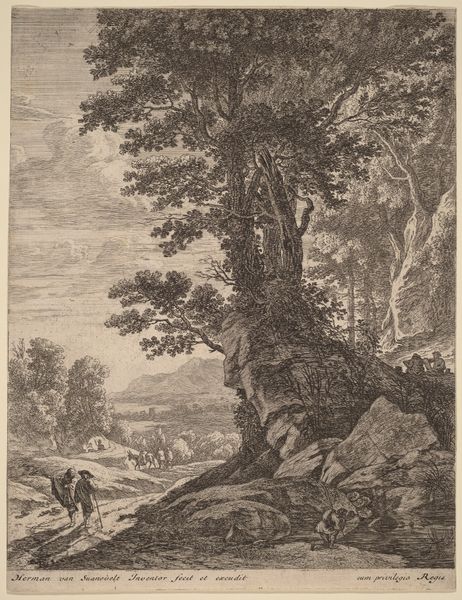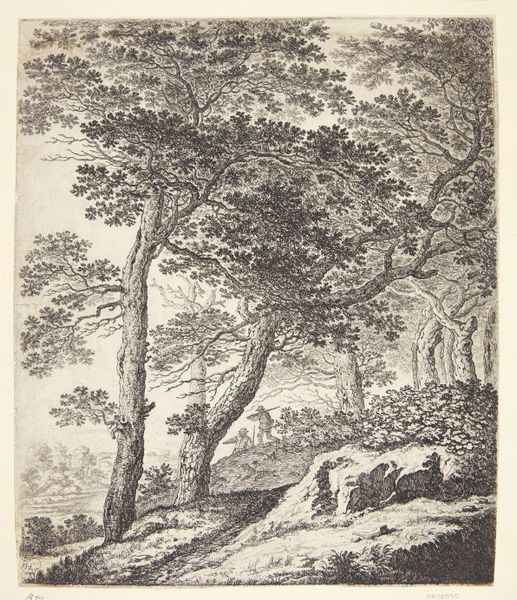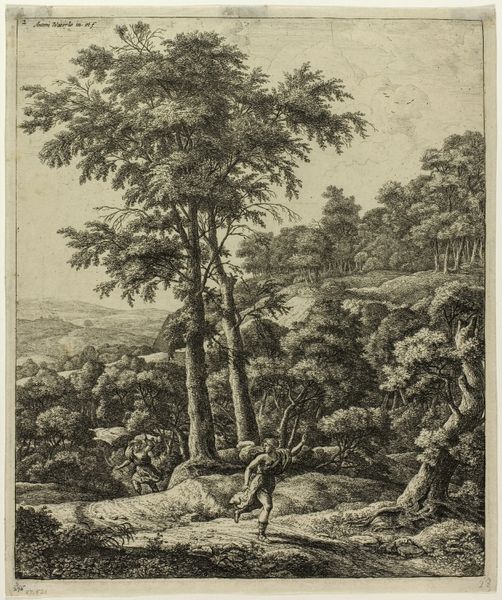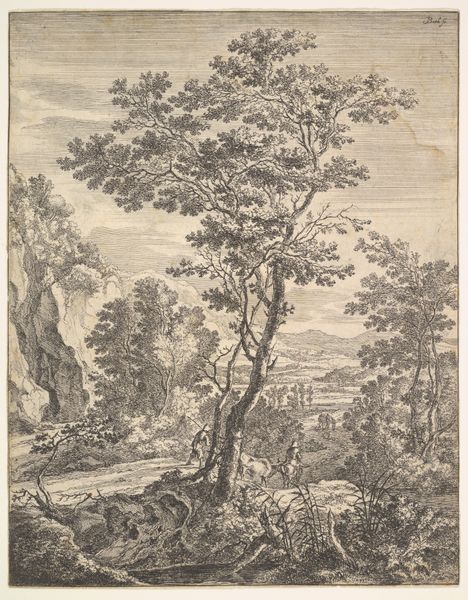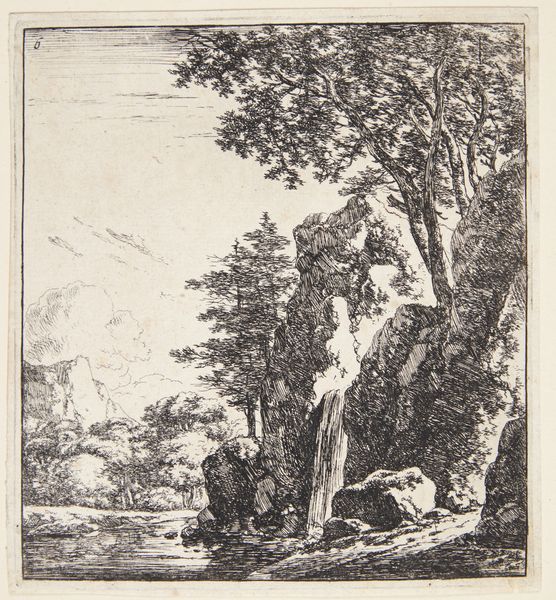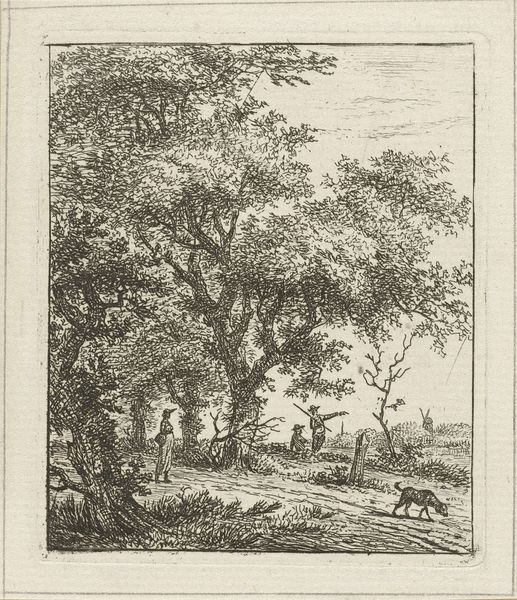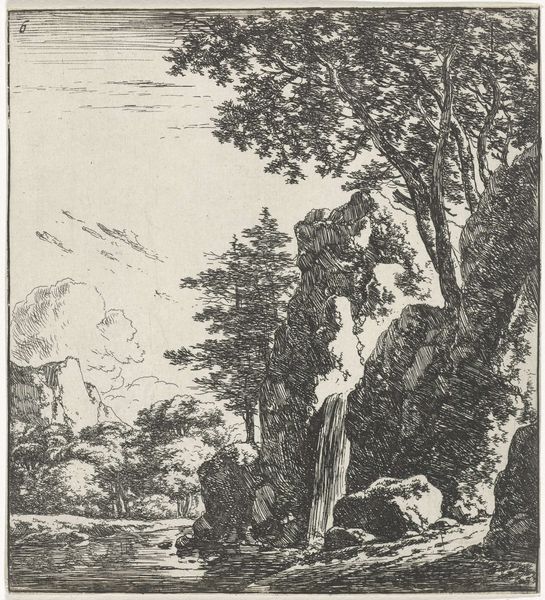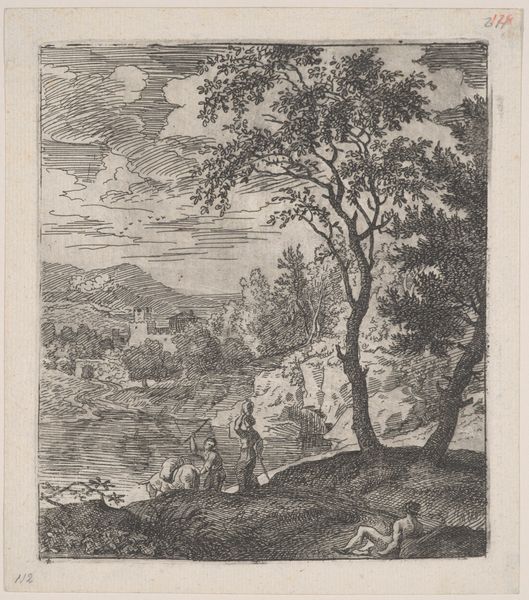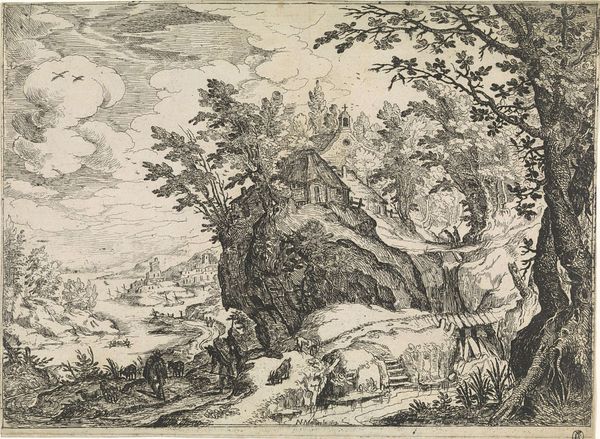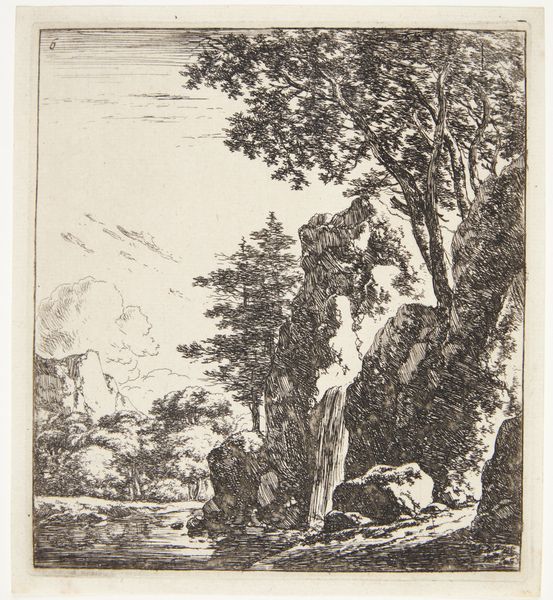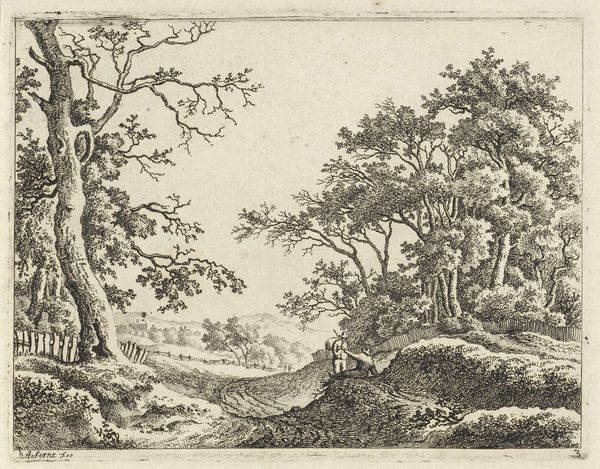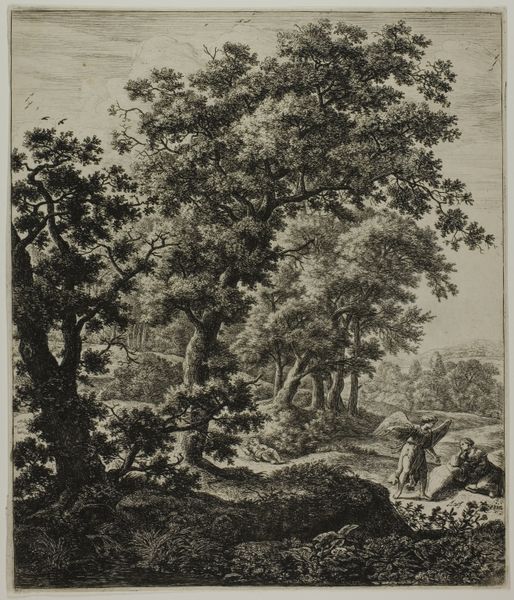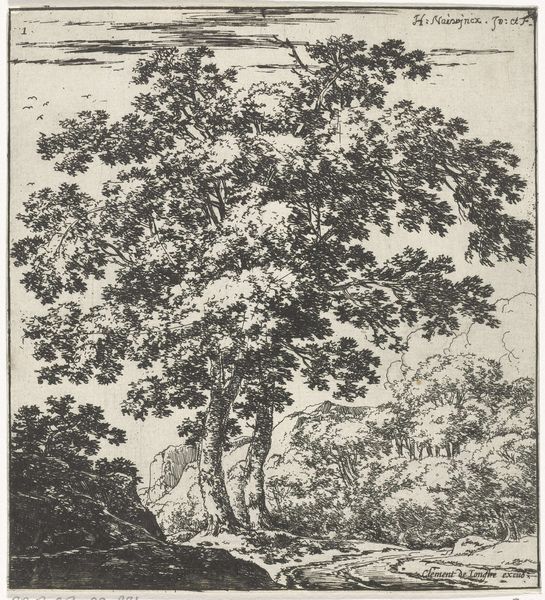
print, etching
#
baroque
#
ink painting
# print
#
etching
#
landscape
Dimensions: 312 mm (height) x 242 mm (width) (plademaal)
Curator: Here we have "A Group of Trees," an etching by Herman van Swanevelt, dating roughly from 1603 to 1655. It's currently part of the collection at the SMK, the National Gallery of Denmark. Editor: Immediately, the contrast between the stark foreground and soft distant landscape strikes me. The etching technique creates a wonderful texture, almost palpable in the looming tree. It projects a sense of the sublime, confronting the viewer with nature's raw power. Curator: Landscape became a hugely popular genre during Swanevelt's time, appealing to the growing urban class. Prints like these offered a means of engaging with nature, but often idealized and imbued with classical ideals, as we can see in the balanced composition. How do you see its role in reflecting the societal power dynamics of its era? Editor: I see that push-pull clearly. The careful arrangement whispers of human dominion over even the wildest landscapes. The workers, tiny within the expanse, suggests the exploitation required for this idealized scene to exist. The natural landscape presented in an etching such as this becomes an arena to reflect on ideas of land ownership and social structures of the 17th century. Curator: Indeed. The presence of travelers further contributes to this understanding. I see them, possibly merchants, on their road among the lower classes and peasants in nature’s theater. In my reading it is about mobility and control, the burgeoning trade routes that reshaped economies, but also reinforced hierarchies, with nature as both a stage and resource. Editor: Considering that, it gives another edge to the quiet drama. We see a slice of carefully managed nature – is it celebration or an implicit critique of this control, even if it is simply about seeing it more complexly? Curator: A complex issue indeed. It is displayed in a space dedicated for artworks but there may be room to create conversation about it with current political discussions. The art piece also can play an active role in debates regarding accessibility. Editor: Yes, let's explore how displaying artworks like this may facilitate dialogue and allow a new generation of observers to develop their own interpretation about social structure, power and political influence in the early modern period.
Comments
No comments
Be the first to comment and join the conversation on the ultimate creative platform.
